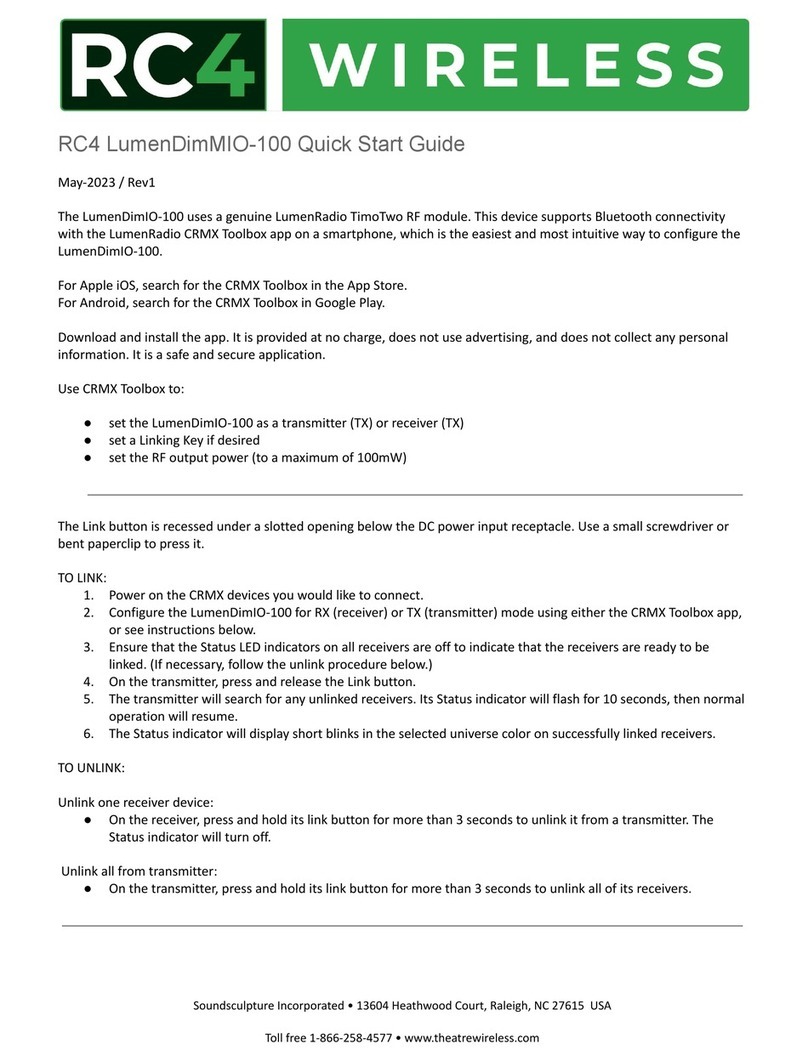RC4Magic Series 3 DMXio User Manual
Page 7
RF Channels and Power-Up Scanning
When an RC4Magic Series 3 DMXio transmitter first powers up, it scans the 2.4GHz radio
band looking for an area with the least traffic. It then sets itself to operate on that frequency
and begins transmitting DMX packets digitally encoded with the selected RC4 System ID.
When this power-up process is complete, the RF Connect LED blinks slowly to indicate a
private local-area wireless network has been established.
When a DMXio receiver powers up, it scans the 2.4GHz band looking for signals from a
DMXio transmitter on the selected RC4 System ID. When the connection is established, the
RF Connect LED will blink steadily. When DMX channel data is received, the DMX/RF Data
LED will blink rapidly with each data packet.
If a receiver does not detect valid data for several seconds, the start-up scan repeats. Thus, if
the transmitter has been turned off and back on (or there has been a power failure) and it
selects a different frequency, the receiver will rescan and reconnect. Thus, receivers always
follow transmitters on the same System ID.
Multiple RC4Magic Series 2 and Series 3 systems using different IDs can operate at the same
time in the same space, and each system will provide a separate wireless DMX universe on its
own private wireless network. In a space with little or no other radio activity, there is
enough bandwidth in the 2.4GHz band to support up to 15 full-speed RC4Magic systems,
each with any number of receivers and dimmers. Even in crowded rf environments there will
usually be enough bandwidth for several RC4Magic systems.
One wireless DMX universe with up to 512 channels uses one RC4Magic system ID. A
DMXio transmitter on a separate ID is required for each different wireless DMX
universe you use. Thus, 4 System IDs provide 4 individual wireless universes, provided
you have enough RC4Magic hardware to make use of them. You can add RC4Magic
devices to your system at any time –just tell us your System IDs when you order.
DMX Data Connections
The DMXio provides male and female 5-
pin XLR connectors, compliant with USITT
DMX512/1990. Internally, these two
connectors are directly wired together with
no active electronics in the signal path.
They can be used for data pass-through
and will not fail in the event of DMXio
power failure.




























